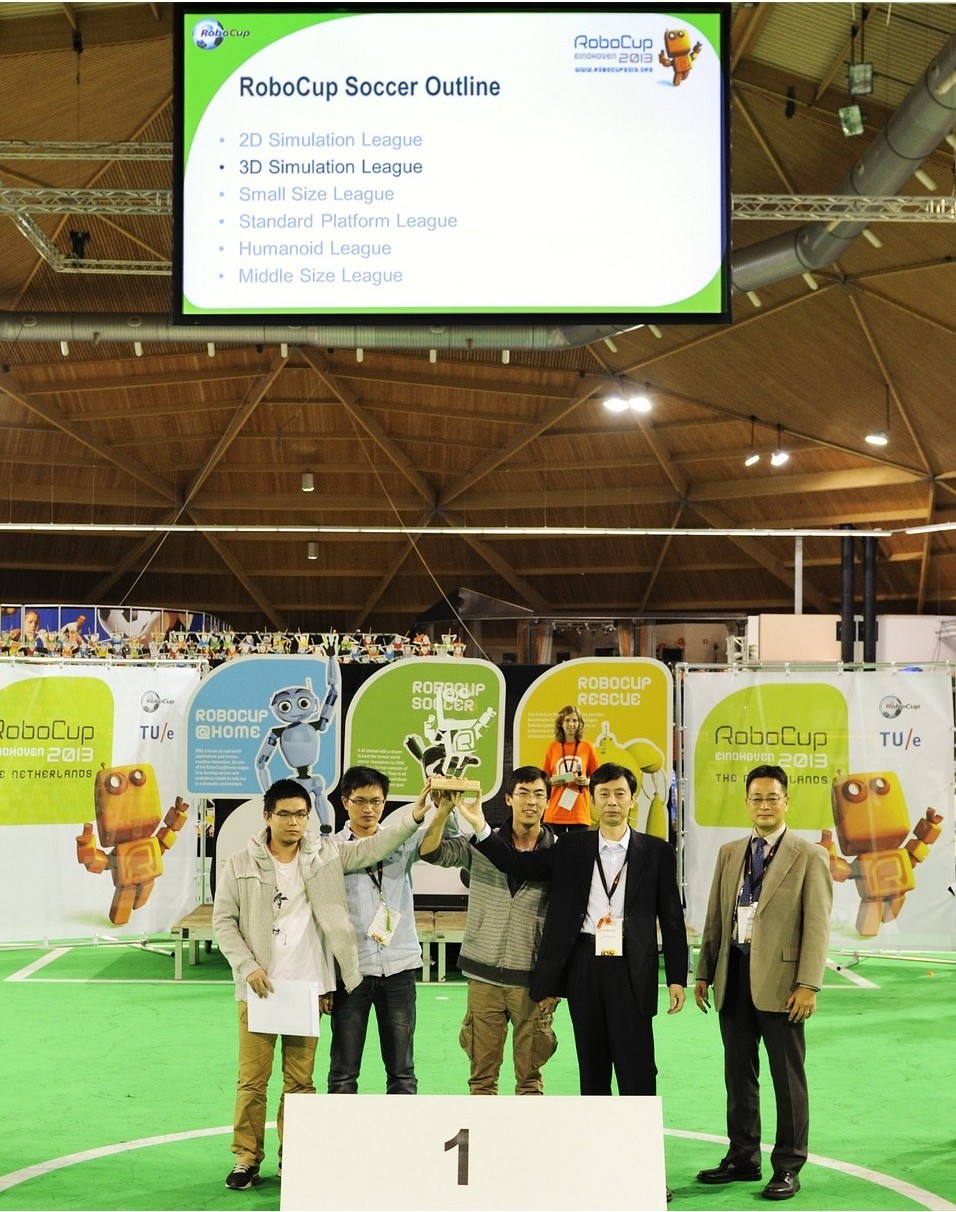USTC Robots Stand on the Podium in RoboCup 2013
Fans of Chinese football team may envy the fans of the USTC WrightEagle, a robot soccer team who had just won their fifth champion in the RoboCup 2013. In the 17th RoboCup, holding in Eindhoven, Netherlands, from June 26th to July 1st, the WrightEagle won a champion in Soccer Simulation 2D and a silver medal in RoboCup @Home, proving its leadership in the world in this area. In the past nine years, the USTCteam has won four gold medals and five silver medals, far beyond other Chinese teams.
RoboCup is a worldwide project with a goal of a soccer-playing-robots team defeating the winners of the World Cup by 2050. In the 2D Simulation League, two teams of eleven autonomous software programs (called agents) each play soccer in a two-dimensional virtual soccer stadium represented by a central server, called SoccerServer. 20 teams from nine countries attended the Soccer Simulation 2D. There were two group matches and a round of double elimination games, in which teams losing twice were eliminated and teams losing no more than once proceed to the finals.
There were four groups in round one, and WrightEagle entered round two with the leading 10 points and total score 23:3. Moreover, the leadership was still been seized tightly in the hand of WrightEagle in round two and it entered the double elimination smoothly. In the next two games, WrightEagle defeat AUT from Iran (7:0) and HELIOS2013 from Japan (3:1). WrightEagle met HELOS2013 again in the final, and robots members of the WrightEagle demonstrated that their desire for champion overwhelmed their rivals. Finally, the WrightEagle won the championship, with a score 2:0.

The award ceremony
On the other hand, in the competitions of RoboCup @Home, which is the major prospect of robot technology and has been highly emphasized both industrially and academically, the attendance of many first-class research university escalated the matches. During the matches, a set of benchmark tests is used to evaluate the robots' abilities and performance in a realistic non-standardized home environment setting. Focus lies on the following domains but is not limited to: Human-Robot-Interaction and Cooperation, Navigation and Mapping in dynamic environments, Computer Vision and Object Recognition under natural light conditions, Object Manipulation, Standardization and System Integration. With absolute high score in most rounds, Robot Kejia from USTC took the leadership among the 21 teams and ranked the first on total scores ultimately. Unfortunately, a communication network bug in the final gave USTC team a pitiful siver medal, and NimbRo@Home from the University of Bonn took the No.1.

Robot Kejia in a match.
As a perfect experimental platform for intelligent control and artificial intelligence theory, RoboCup contributes a lot the research on theoretical research on artificial intelligence. The matches provided an opportunity for the members of WrightEagle to communicate with pioneers in this area. Furthermore, it will make directions of future researches available by offering comprehensive understanding about the research status of the foreign colleagues.
(QIU Zengwei, USTC News Center)
W020130710380563399096.jpg
Back

